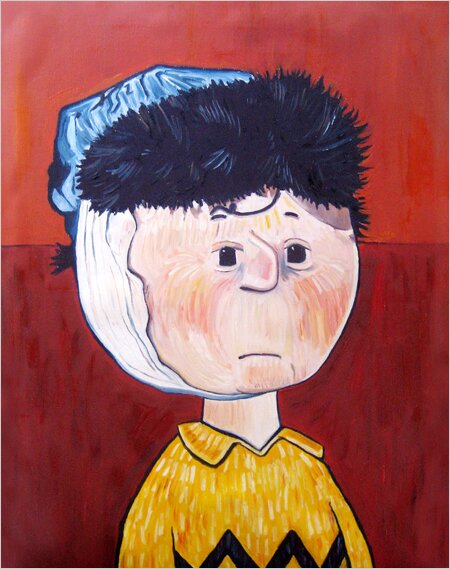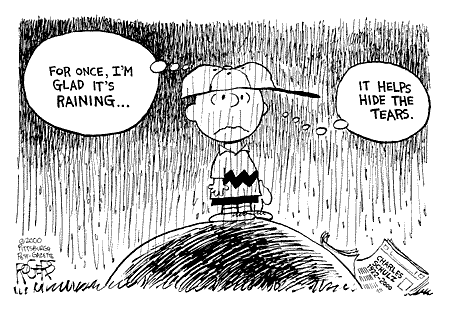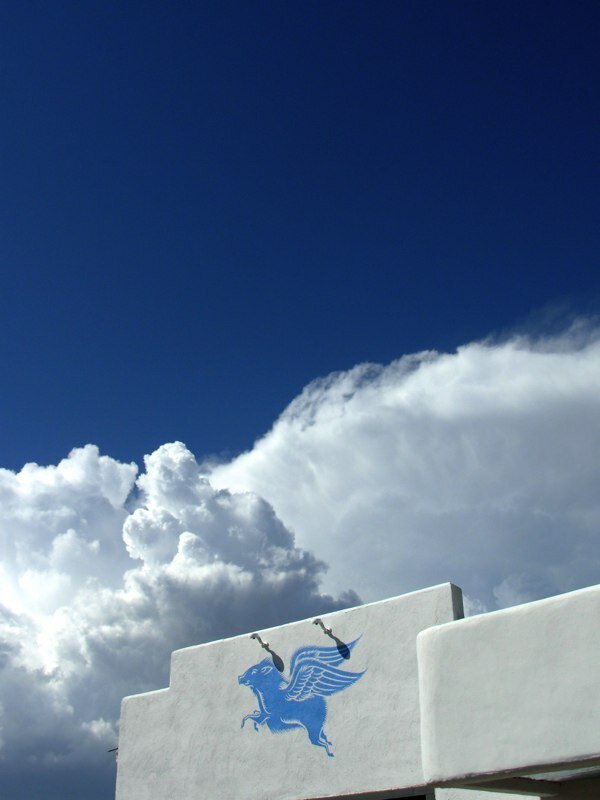The following comments on the work of Sol LeWitt were sent in by artist, writer, and Emvergeoning reader Chris Karcher. While this piece isn’t a revolutionary reevaluation of LeWitt, I think Karcher’s emphasis on the playful, humorous, and lyrical aspects of LeWitt’s work helps to balance a critical narrative that is too often weighted toward detached conceptualism. I hope you enjoy it.
The two recent exhibits of new work by Sol LeWitt (“Scribble Wall Drawings,” PaceWildenstein Gallery and “A Cube with Scribbled Bands in Four Directions, One Direction on Each Face,” Paula Cooper Gallery – see this Weekend Update at artnet.com) provide an occasion to comment on the legacy of an iconic American artist. This short note is inspired by the fact that LeWitt died in April of 2007, and both exhibits consist of work created after his death.
The catalog produced in conjunction with a retrospective of LeWitt’s work at the San Francisco Museum of Modern Art from 2000 wanders across a lifetime of output starting with early figurative work, then moves on to the geometric work with which he remains closely associated and finishes with the later paintings of irregular brush strokes and lines. LeWitt produced a staggering number of drawings and paintings. In between he oversaw the creation of large numbers of constructions, sculptures and wall drawings. It certainly appears that the man enjoyed making things. And, that he enjoyed painting and drawing.
“The idea itself, even if not made visual, is as much a work of art as any finished product.” LeWitt wrote this in 1967 and it remains, perhaps, the most prevalent conception of what his art was about; the idea, not the output. LeWitt was widely known for his use of other artists to actually create his “finished product,” so it is not unreasonable that people assume Lewitt was above the dirty work of putting pen-to-paper or brush-to-canvas. This notion of the artwork itself not being the point dogged LeWitt throughout his career. Yet his later work is so colorful and lyrical that the label “conceptual” no longer seems to encapsulate it. His comment from 1982, “I would like to produce something I would not be ashamed to show Giotto,” may better speak to LeWitt’s true sensibilities as an artist.
The notion of playfulness seems to escape many discussions about LeWitt and his work. Even such exhausting projects as the “Incomplete Open Cubes” series – with all its manifestations – has, at its core, a jocular sensibility. The cubes as drawings, as photographs, as small sculptures, as big sculptures, in black, in white, all obsessively depict the 122 variations. The doodles evolve into isometric renderings that become little models that become big sculptures that are in turn photographed, all of which are printed in little books and pamphlets. It is not unlike a great shaggy-dog joke. Avoid getting caught up in intellectual analysis and the juxtaposition of an incomplete cube in a gallery filled with baroque and mannerist paintings has its lighter side.
His process of seeking every combination of a series served, among other things, to ensure that LeWitt had plenty of material to work with. Seemingly endless variations of bands in four directions were turned out in seemingly endless varieties of mediums. The consistency of the form allowed for an opportunity to fully explore the interaction of colors, or in the case of sculpture, the interaction of light and shadow. LeWitt repeatedly set strict limits that allowed for infinite variety. Jorge Luis Borges, in an essay tracing the various manifestations of a single thought across time and literature, arrived at a final summation that also describes the work of LeWitt, “an infinite sphere whose center is everywhere and whose circumference is nowhere.”
The art of LeWitt should not be defined by hard logic and cool detachment. LeWitt’s work is better appreciated for the humor, color and inventiveness that Giotto would have enjoyed.
30 Comments »






 The City of Marfa endured an influx of Texas hipsters last weekend. Why would people drive eight hours to a former POW camp in West Texas? A free plate of barbecue courtesy of the Chinati Foundation and the chance to watch Sonic Youth in a small pavilion across the street from a Dairy Queen. San Antonio photographer Patrick Zeller drove out to Marfa and took some great photos of his West Texas journey here. There was a sprawling group show of more than 60 artists at Building 98 called Camp Marfa, a place where you could sit on a couch and watch a sort of Faces of Death version of competitive bull-riding accidents as well as a strikingly poetic series of explosions and slivers of nuclear test documentaries. Fort Russell was once a rest stop for famous generals and various U.S. presidents. The weathered, built in bar still houses a framed, velvet wall that kept high ranking medals. It’s a beautiful example of the art of absence, with the darkened blue velvet beneath the missing medals becoming accidental evidence of importance. There was a big West Texas contingent over at Building 98, with Jeffrey Wheeler at the helm. Wheeler and his brother run a space in Lubbock and started the ongoing, traveling exhibition called Ulterior Motifs. Some of the artists featured in this year’s show include Mel Chin, Bale Creek Allen, Daniel Johnston and Sharon Kopriva. I was in a last minute group show at a renovated restaurant at the edge of town called 500e. Austinites Sean Gaulager, Hank Waddell, Adreon Henry and Jacob Villanueva put the show together on a shoestring and a little bit of help from Vitamin Water and Sapphire Gin.[Sounds awful, but that combination incurs zero hangovers] After Sonic Youth, Adreon Henry’s band played for the meandering crowds. They will be playing again on Halloween if you are in the state capital that day. Over and out. More pictures?
The City of Marfa endured an influx of Texas hipsters last weekend. Why would people drive eight hours to a former POW camp in West Texas? A free plate of barbecue courtesy of the Chinati Foundation and the chance to watch Sonic Youth in a small pavilion across the street from a Dairy Queen. San Antonio photographer Patrick Zeller drove out to Marfa and took some great photos of his West Texas journey here. There was a sprawling group show of more than 60 artists at Building 98 called Camp Marfa, a place where you could sit on a couch and watch a sort of Faces of Death version of competitive bull-riding accidents as well as a strikingly poetic series of explosions and slivers of nuclear test documentaries. Fort Russell was once a rest stop for famous generals and various U.S. presidents. The weathered, built in bar still houses a framed, velvet wall that kept high ranking medals. It’s a beautiful example of the art of absence, with the darkened blue velvet beneath the missing medals becoming accidental evidence of importance. There was a big West Texas contingent over at Building 98, with Jeffrey Wheeler at the helm. Wheeler and his brother run a space in Lubbock and started the ongoing, traveling exhibition called Ulterior Motifs. Some of the artists featured in this year’s show include Mel Chin, Bale Creek Allen, Daniel Johnston and Sharon Kopriva. I was in a last minute group show at a renovated restaurant at the edge of town called 500e. Austinites Sean Gaulager, Hank Waddell, Adreon Henry and Jacob Villanueva put the show together on a shoestring and a little bit of help from Vitamin Water and Sapphire Gin.[Sounds awful, but that combination incurs zero hangovers] After Sonic Youth, Adreon Henry’s band played for the meandering crowds. They will be playing again on Halloween if you are in the state capital that day. Over and out. More pictures?